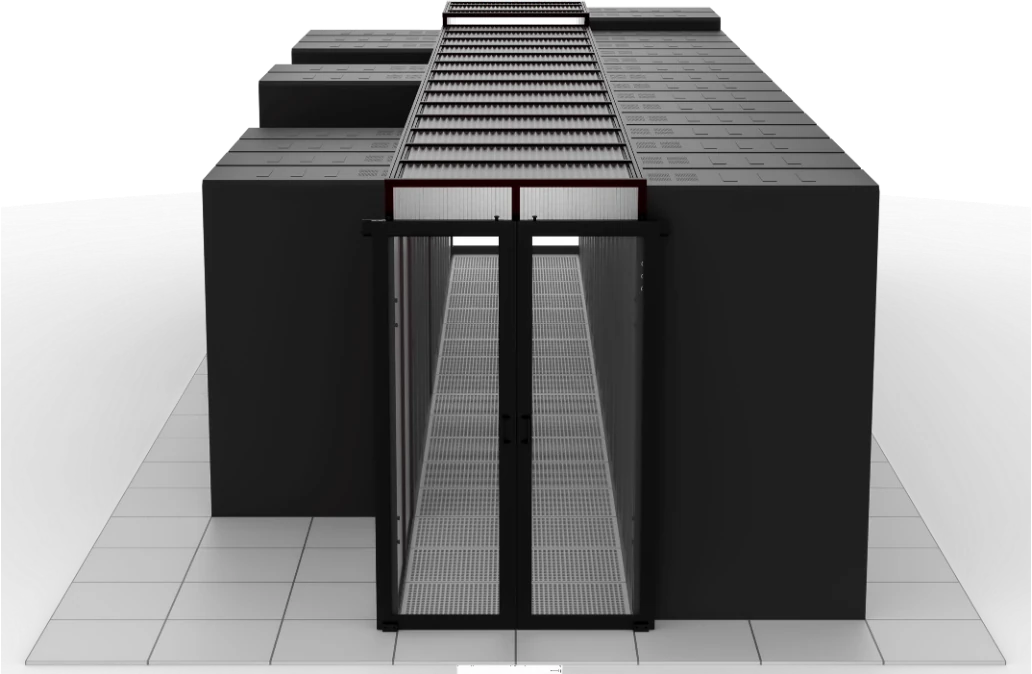Why you Shouldn’t Overlook Perforated Tiles: 4 Common Misconceptions15 min read

Several factors are driving the need for making cooling infrastructure as efficient and effective as possible including; increased IT equipment density, OpEx reduction goals, space requirements, and reliability. In light of these pressures, many sites are considering AFM improvement measures, if not already implementing them.
However, even though the need to reduce operating expenses has intensified, the easiest and most available AFM solution is not being utilized nearly as well as it could be. This very simple, effective, and required aspect of AFM is often overlooked and mismanaged–perforated tile and grate placement.
What you should know
The definition of a properly placed perforated tile is within two tile positions of IT equipment intakes. So an improperly placed perforated tile will typically be any tile in a hot aisle or open area of the room, but there are exceptions. If IT equipment has been mounted backward (from an AFM perspective) with the intake in the hot aisle, then a perforated tile is likely needed in the hot aisle until the equipment can be turned around.
If more conditioned air is released from perforated tiles in a cold aisle than is consumed by IT equipment, this excess conditioned air is called bypass airflow. Perforated tiles in improper locations release bypass airflow and compromise room cooling capacity. Also, too many perforated tiles in appropriate locations (cold aisles) can also release bypass airflow. This is why perforated tile placement is one of the easiest, but a crucial AFM solution in the computer room.
What the Research Says
Upsite research data from 45 sites reveals that on average, only 77% of perforated tiles and grates are properly located. Of the 45 sites studied, only 6 had properly placed 100% of their perforated tiles, and the worst site had properly placed only 7% of their perforated tiles. During commissioning of their computer room, this site had placed all perforated tiles where they would ultimately be needed. But with only about 10% of the raised floor filled with cabinets, all cooling units were running and no perforated tiles were replaced with solid tiles. Most computer rooms are not this bad, but the condition of not adjusting to the actual load is common.
How to Identify if you Have a Problem
One way to identify if an excess volume of conditioned air is being supplied to a cold aisle is to measure the ceiling temperature, easily accomplished with an IR thermometer or IR camera. In general, the ceiling should be one of the warmest areas in the room, but if cold areas are present above cold aisles, it’s likely that more conditioned air is being supplied than the IT equipment actually requires.
In some cases, there may not be enough solid tiles available to replace excess perforated tiles. Even so, purchasing additional solid tiles is a relatively low-cost way to improve AFM.
4 Common Misconceptions about Perforated Tile Placement
- Perforated tiles require placement in hot aisles to push the hot air back up to the cooling units.
→ FALSE: This is unnecessary. The low pressure area above a cooling unit will draw all of the air back that the unit supplied. - It’s best to place high-density cabinets and perforated tiles close to cooling units.
→ FALSE: In many raised-floor environments, there is actually low static pressure closer to the cooling units, so there may be lower pressure for those tiles located closest to the cooling units. - Cold aisles should have 2 full rows of perforated tiles.→ FALSE: A full row of perforated tiles often provides more conditioned air than the IT equipment in that row consumes. This excess conditioned air, though it came out of a perforated tile located in a cold aisle, turns into bypass airflow as it leaves the aisle on its way back to the cooling unit. As a result, it’s not consumed by the IT equipment. You should place only as many perforated tiles as needed in a cold aisle to supply the volume of conditioned air required by the IT equipment.
- Perforated tiles next to the entry keep the board members happy.→ TRUE: (perhaps), but… While this placement may reduce the number of questions about why the room doesn’t feel cool enough, it actually reduces the overall cooling efficiency and capacity in the room. The goal of managing the number and location of perforated tiles is to have all IT equipment intake air temperatures as low and as even as possible, and it may be necessary to add perforated tiles in some locations. Once IT intake air temperatures are as low and even as possible, you can then realize OpEx improvements by turning off cooling units and reducing cooling unit variable speed fans (thus, keeping board members happy).
- Perforated tiles require placement in hot aisles to push the hot air back up to the cooling units.
The industry's easiest to install containment!
AisleLok® solutions are designed to enhance airflow management,
improve cooling efficiency and reduce energy costs.
The industry's easiest to install containment!
AisleLok® solutions are designed to enhance airflow management,
improve cooling efficiency and reduce energy costs.

it should also be noted that non-directional air flow panels without the use of full cold aisle containment can also significantly increase the amount of bypass air vs directional type air flow products which are much more efficient, and use less CFM to cool the rack load